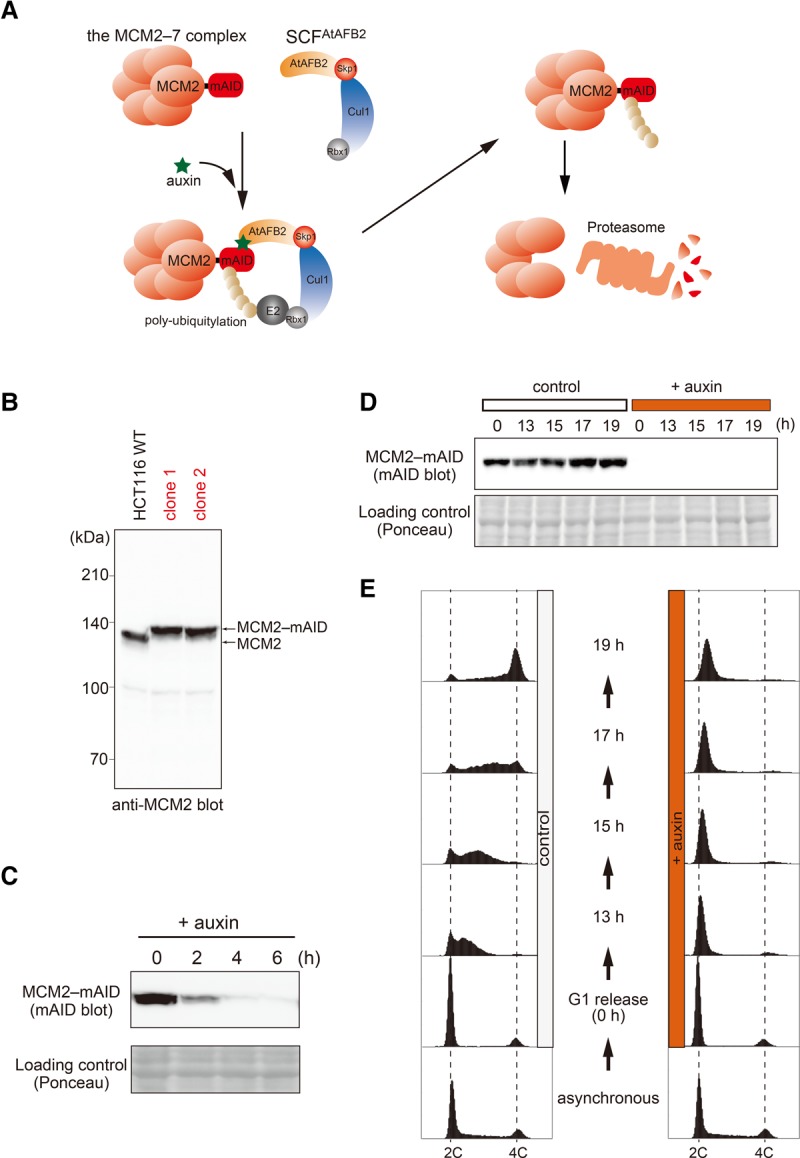Figure 1.

Construction of MCM2-mAID cells for artificial fork stalling. (A) A schematic representation of auxin-mediated proteolysis of MCM2-mAID. An auxin-dependent F-box protein, AFB2 of A. thaliana (AtAFB2), forms an E3 ubiquitin ligase with the endogenous SCF components. In the presence of auxin, MCM2-mAID is targeted by AtAFB2 for polyubiquitylation and subsequent destruction by the proteasome. (B) Evidence that clones 1 and 2 express the MCM2-mAID protein. (C) Time course of proteolysis of MCM2-mAID. Asynchronously growing MCM2-mAID cells were treated with auxin (indole-3-acetic acid [IAA]) before harvesting at the indicated time points. Ponceau staining shows a loading control. (D,E) MCM2-mAID cells were arrested in G1 phase and released into S phase after MCM2-mAID depletion. In control cells, DMSO replaced auxin. MCM2-mAID proteins were detected by immunoblotting using the anti-mAID antibody (D), and DNA content was measured by flow cytometry (E).
